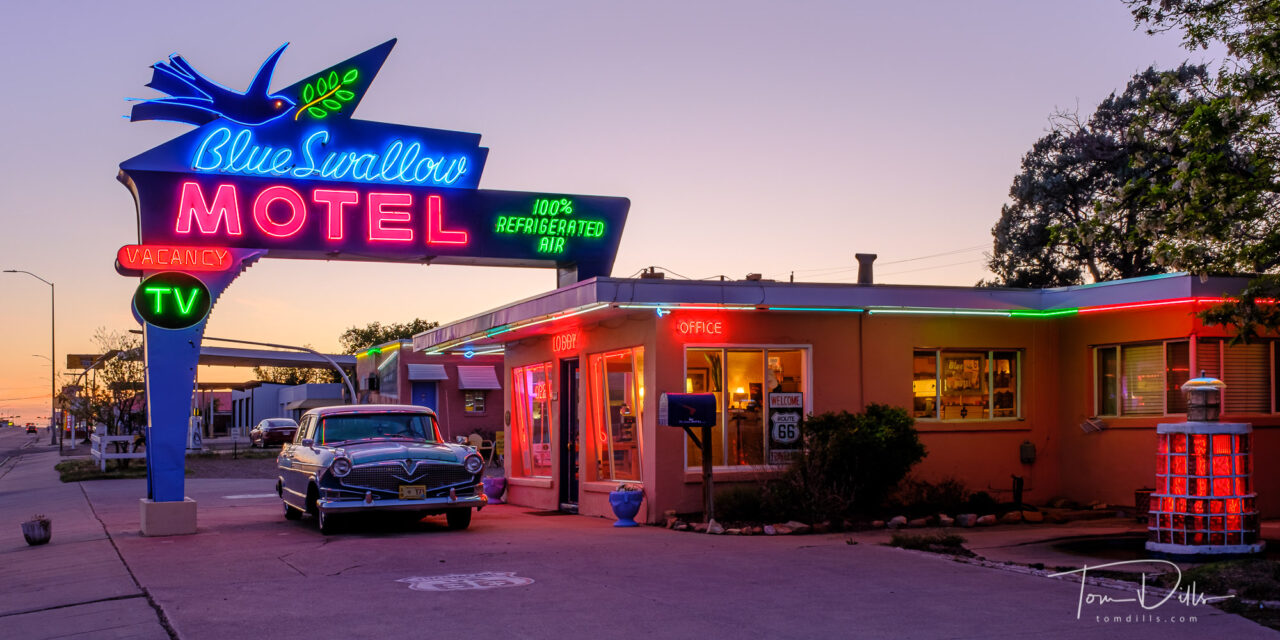
When we first started planning our visit to the Southwest, I was attracted to the idea of visiting all or part of Route 66, that legendary highway from Chicago to LA that marked the beginning of the car craze and gave rise to the whole road trip mystique that persists in the US to this day. A lot of photographers have documented portions of this iconic road over the years, and I wanted a chance to see and photograph parts of it myself.
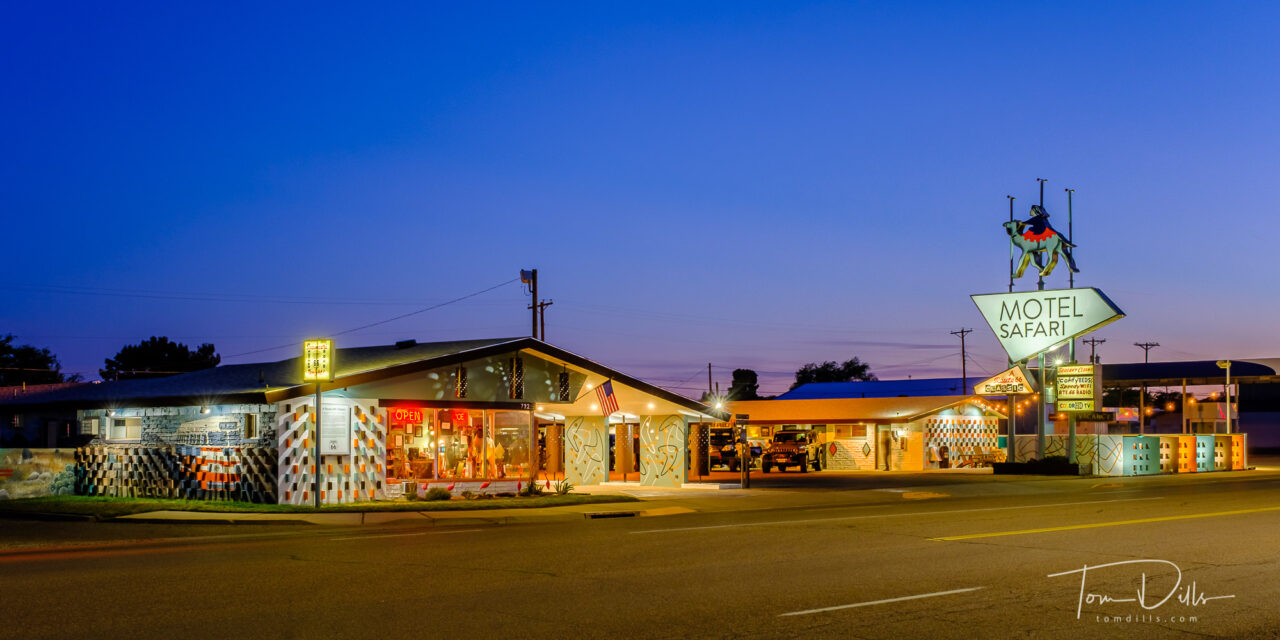
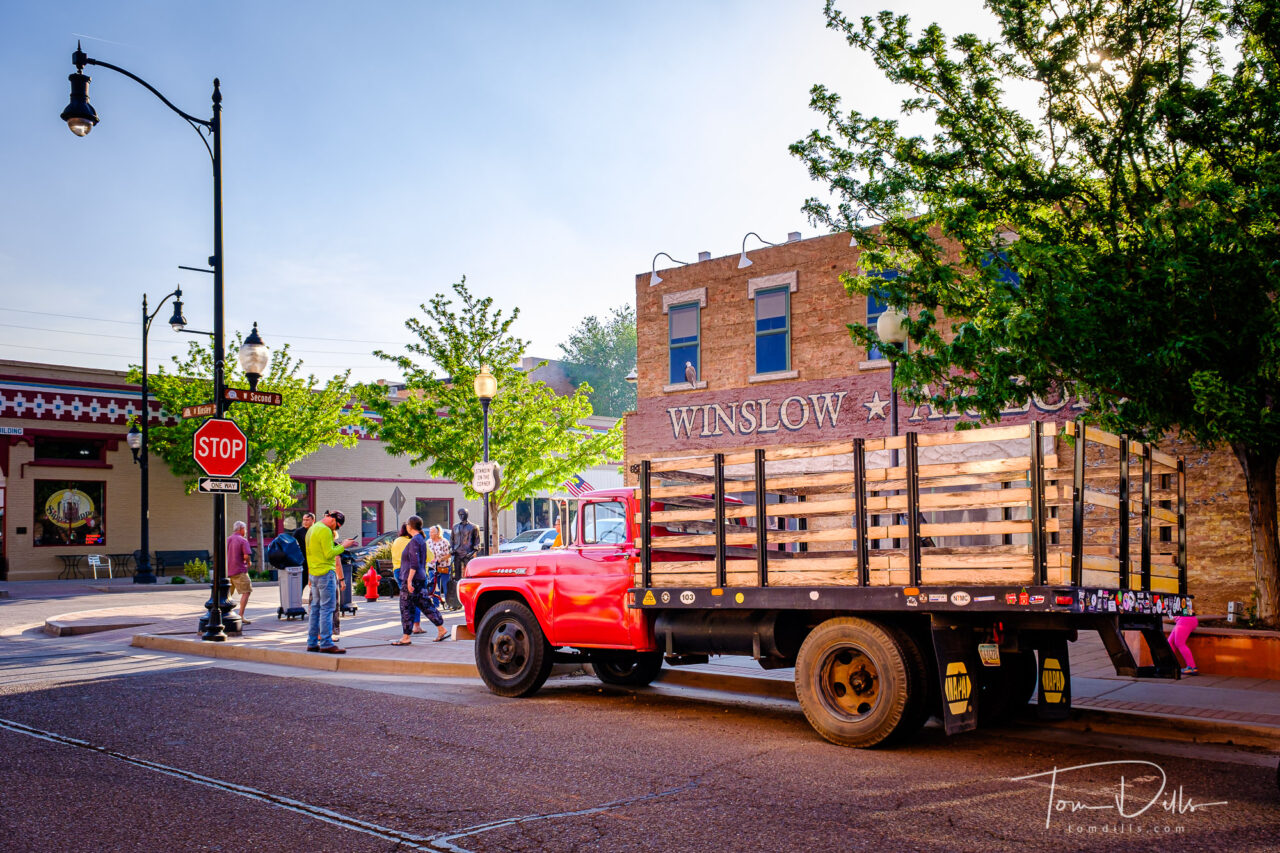
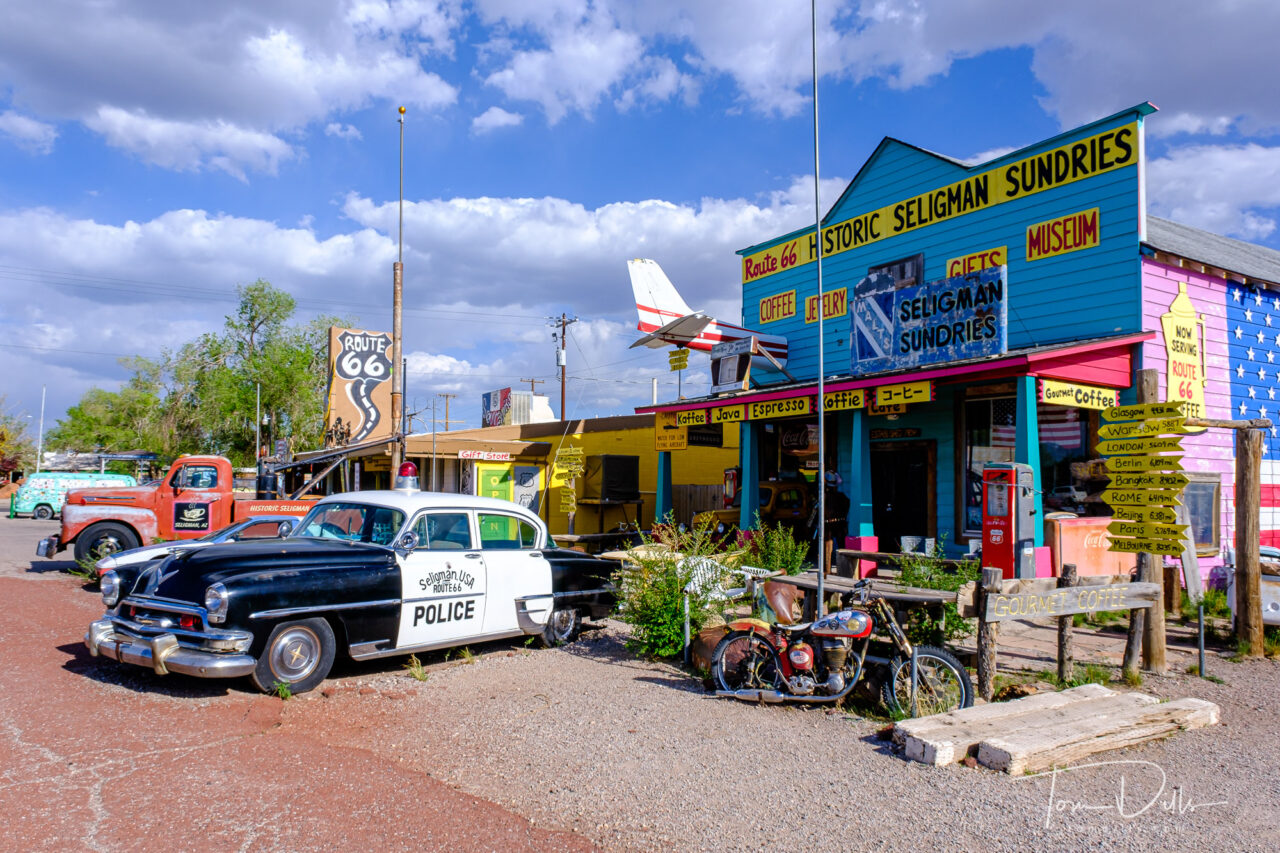
In doing our research, it seemed that a lot of the guidebooks are directed at people who want to travel every last remaining inch of the road. There are lots of people who do that, and we ran into some of them, with their Official Route 66 T-shirts, hats, bumper stickers and guidebooks. There were a few caravans of classic cars, motorcycles and other assorted vehicles. But there seemed to be plenty of people like us, just attracted to the few remaining places that contain the nostalgia of the old “Mother Road” and wanting to see what it was all about.
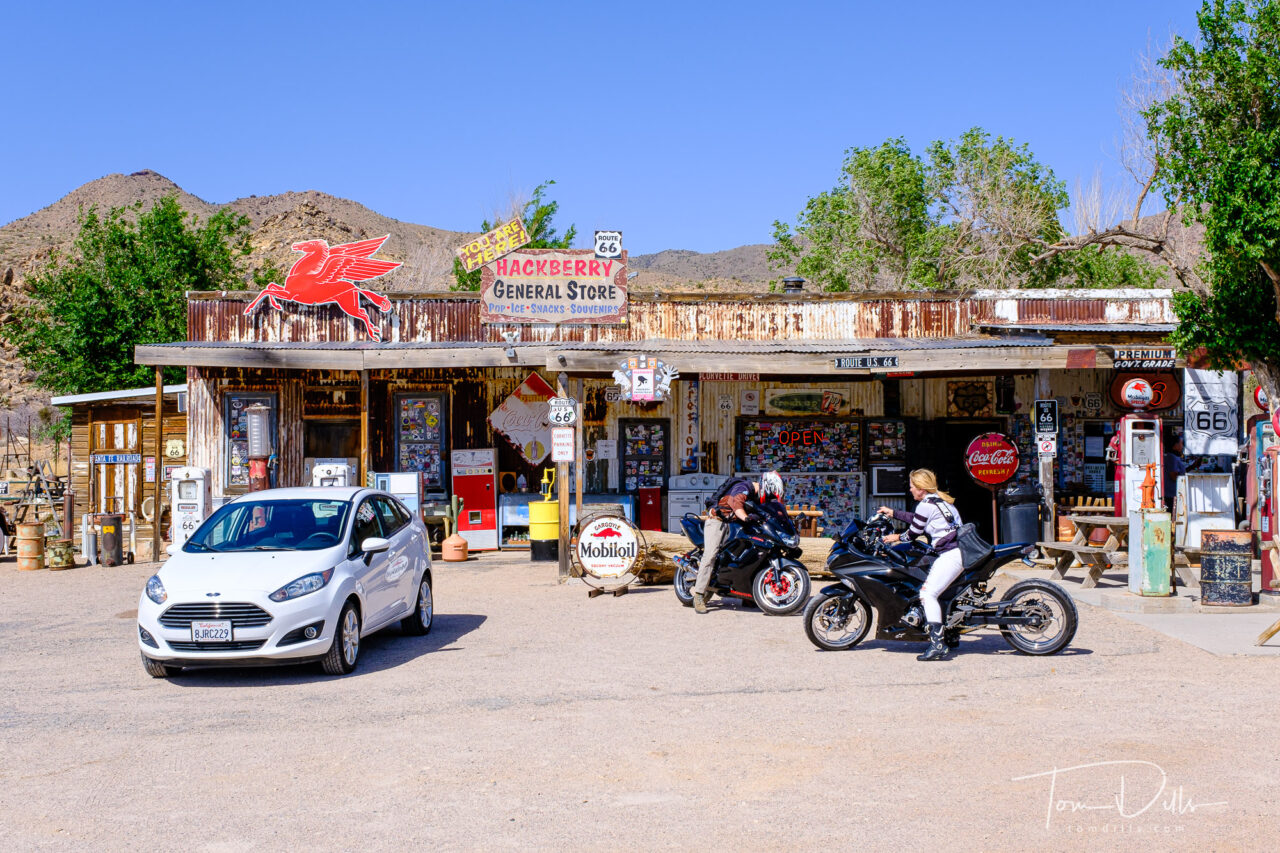
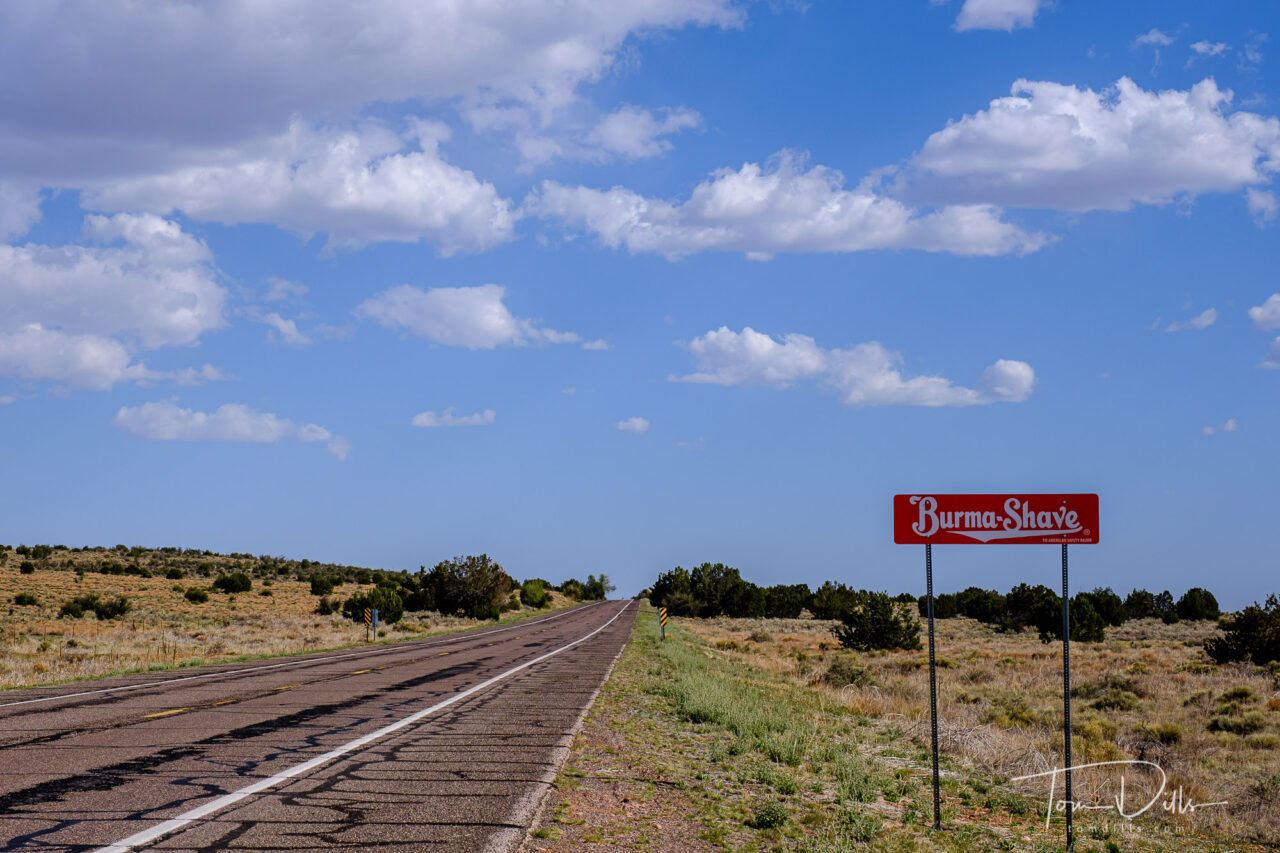
It wasn’t our intention to travel the whole route, or even all of the relatively small stretch we visited (we started in Oatman, AZ and kinda followed it as far as Yukon, Oklahoma. After inadvertently finding ourselves on a 25+ mile long stretch of dirt road that “used to be” Route 66 at the New Mexico-Texas border I was glad weren’t expecting to cover the whole thing. For the most part, the portions of the original route that remain are well marked with “Historic Route 66” signage. But some parts are lost to time and conditions, and hardly suitable for travel by the people who live there, much less by tourists seeking to reconnect with history.
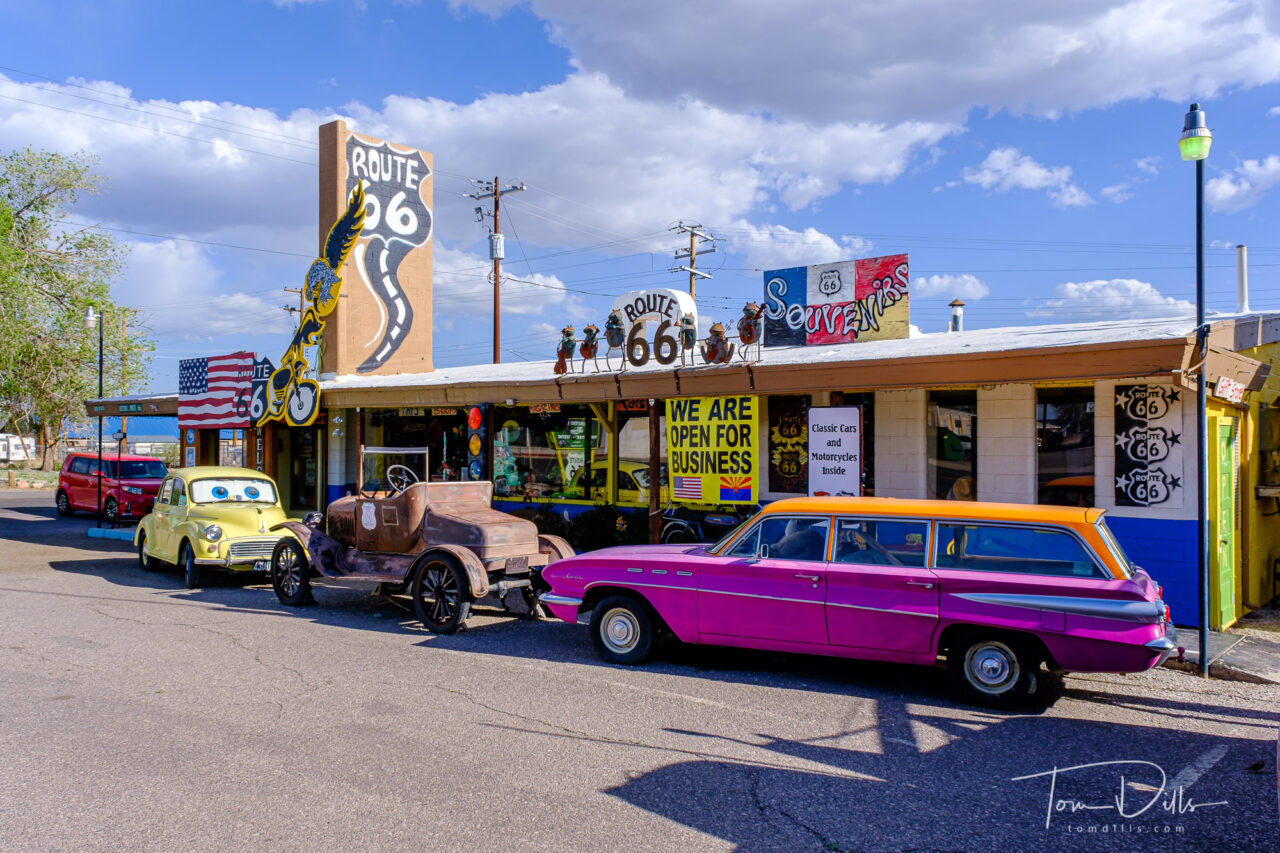
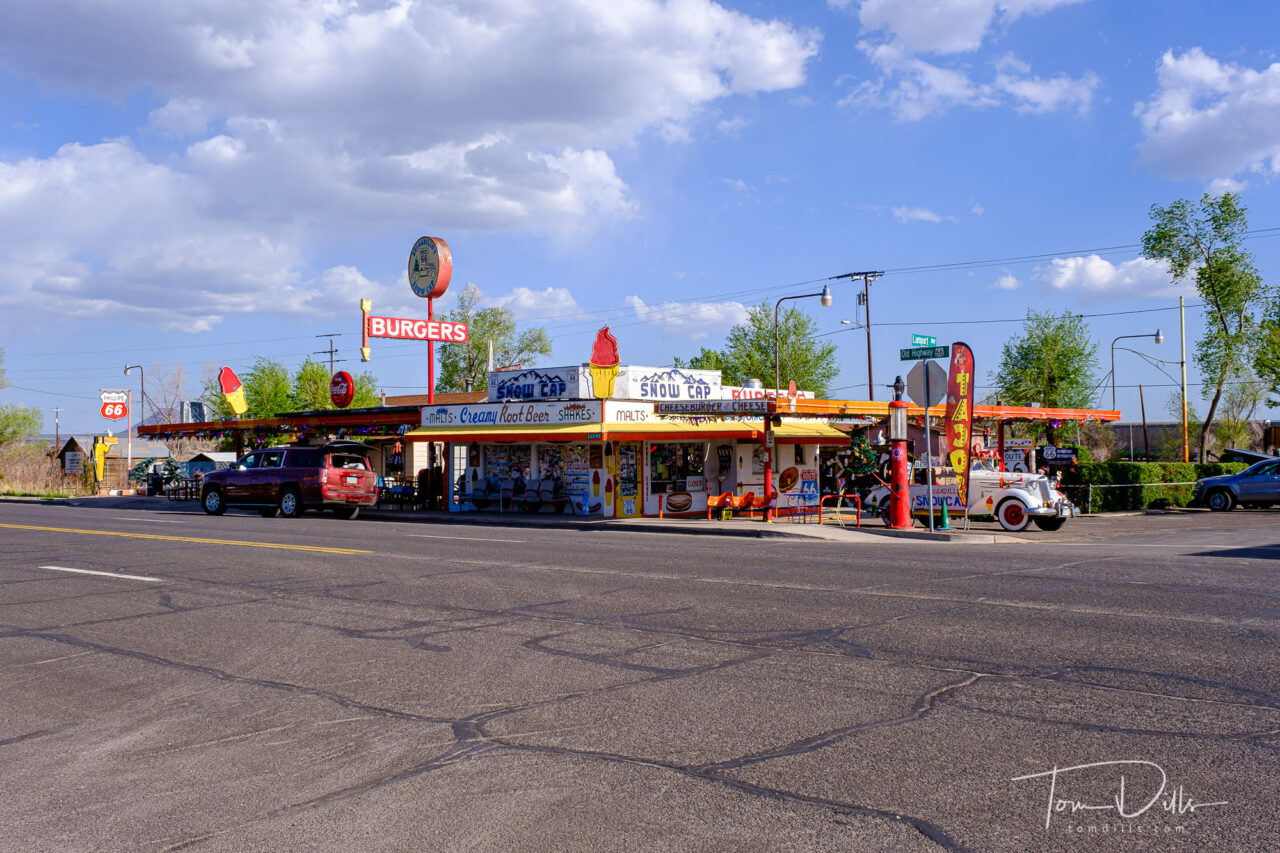
Sorry to say, but Momma’s showing some wear and tear these days, in my eyes. I’m not sure what I expected with Route 66, but I came away from it a bit disappointed. Maybe I was just 50 years too late, but it felt a lot like just another string of towns abandoned by time and the diversion of car traffic by freeways and bypasses. Yes, there are pockets of apparent prosperity, mostly in towns that have other means of economic support but also in places like Tucumcari, NM where a handful of wonderful businesses hang on due to their owners’ efforts and longstanding reputation. But mostly, we drove for miles and miles to get to a place or a thing, looked at it and said (or thought) ‘huh.” The glory of Route 66 lives on in memories or the imagination, I guess.
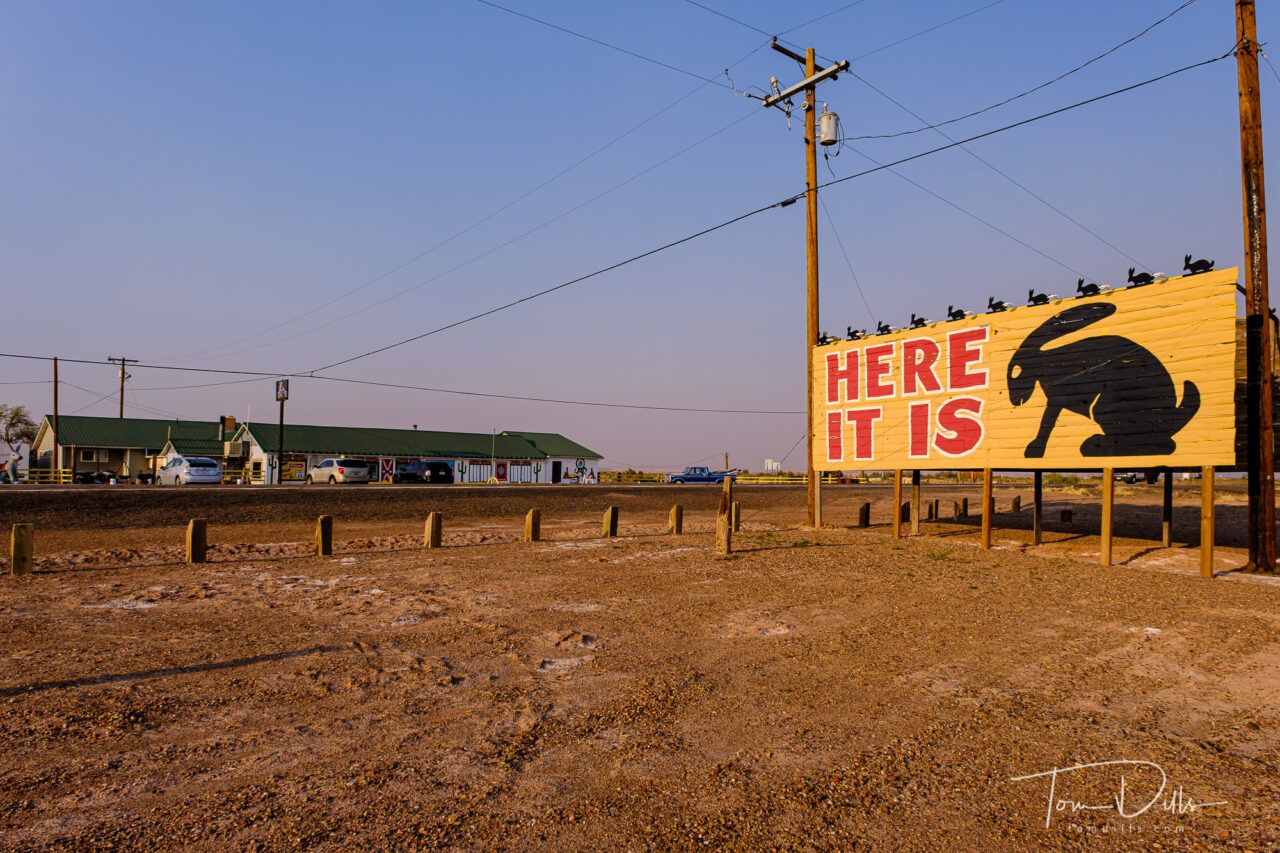
I didn’t set out with a “shot list” or really any kind of preconceived notion of what I’d find to photograph. I wasn’t looking to make my own definitive guide to Route 66 or even publish a comprehensive collection of photography. I wanted to see what we found and to let that determine the direction I would take with my camera. I shot some landmarks, photographed some abandoned buildings and other remains of the past. I made some nice evening photographs of the lovely motels in Tucumcari. And we drove right on by a fair number of places, partly due to time constraints but also due to lack of visually interesting subject matter.
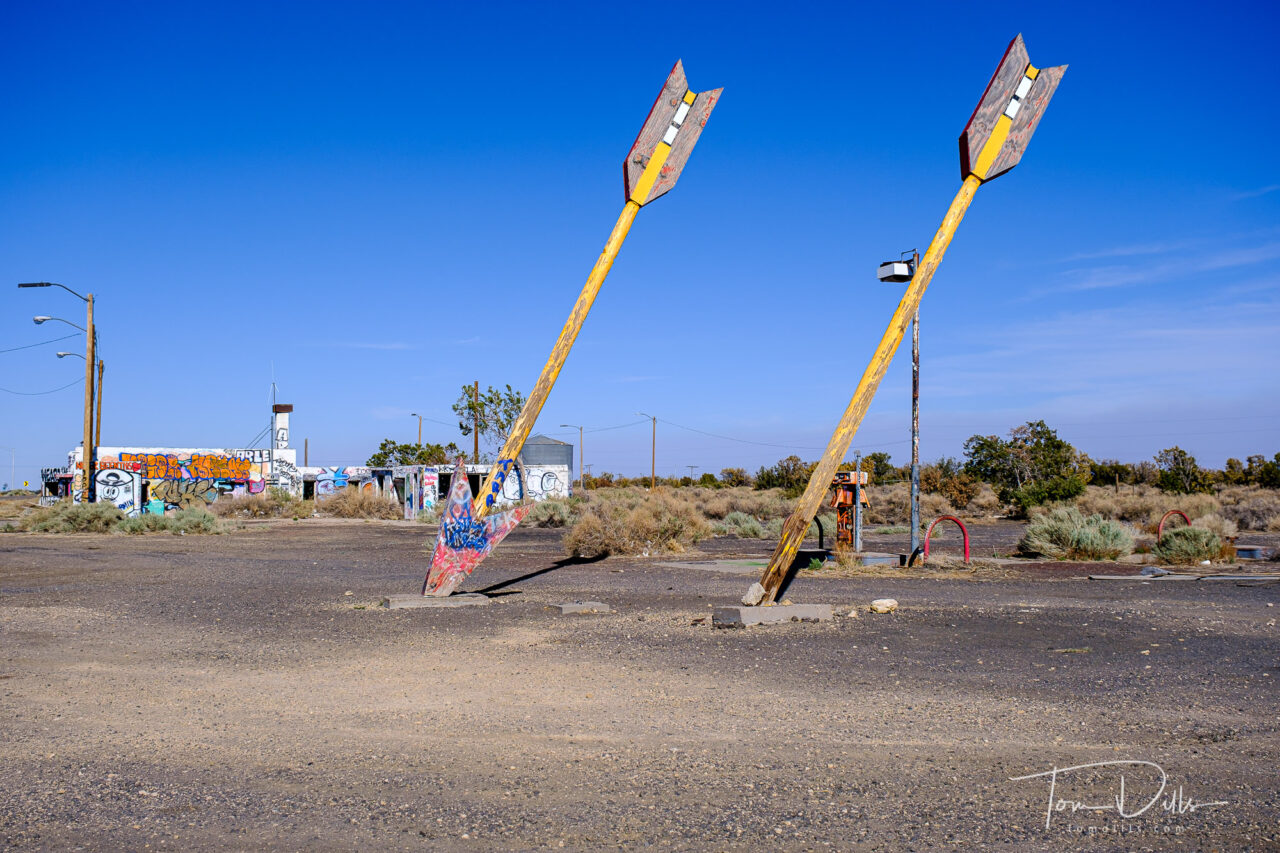
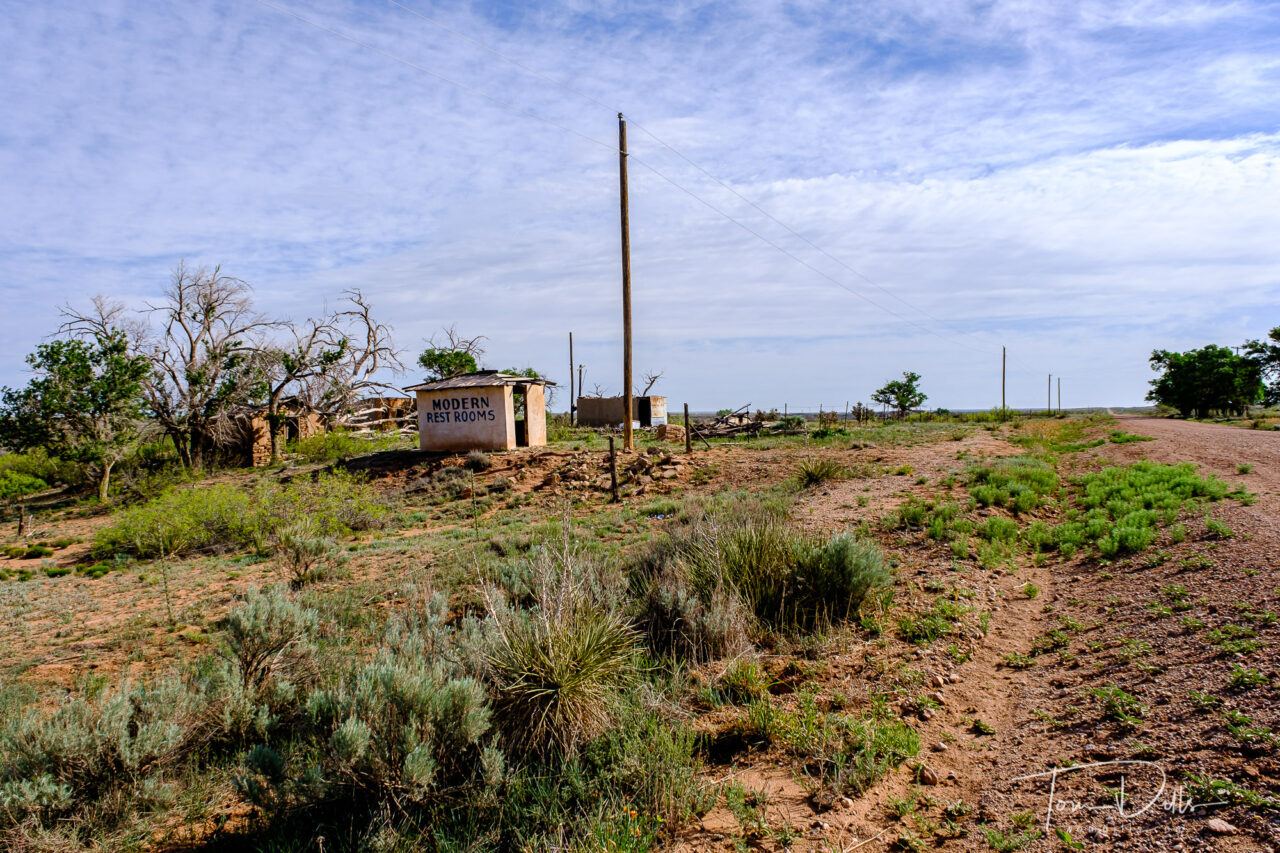
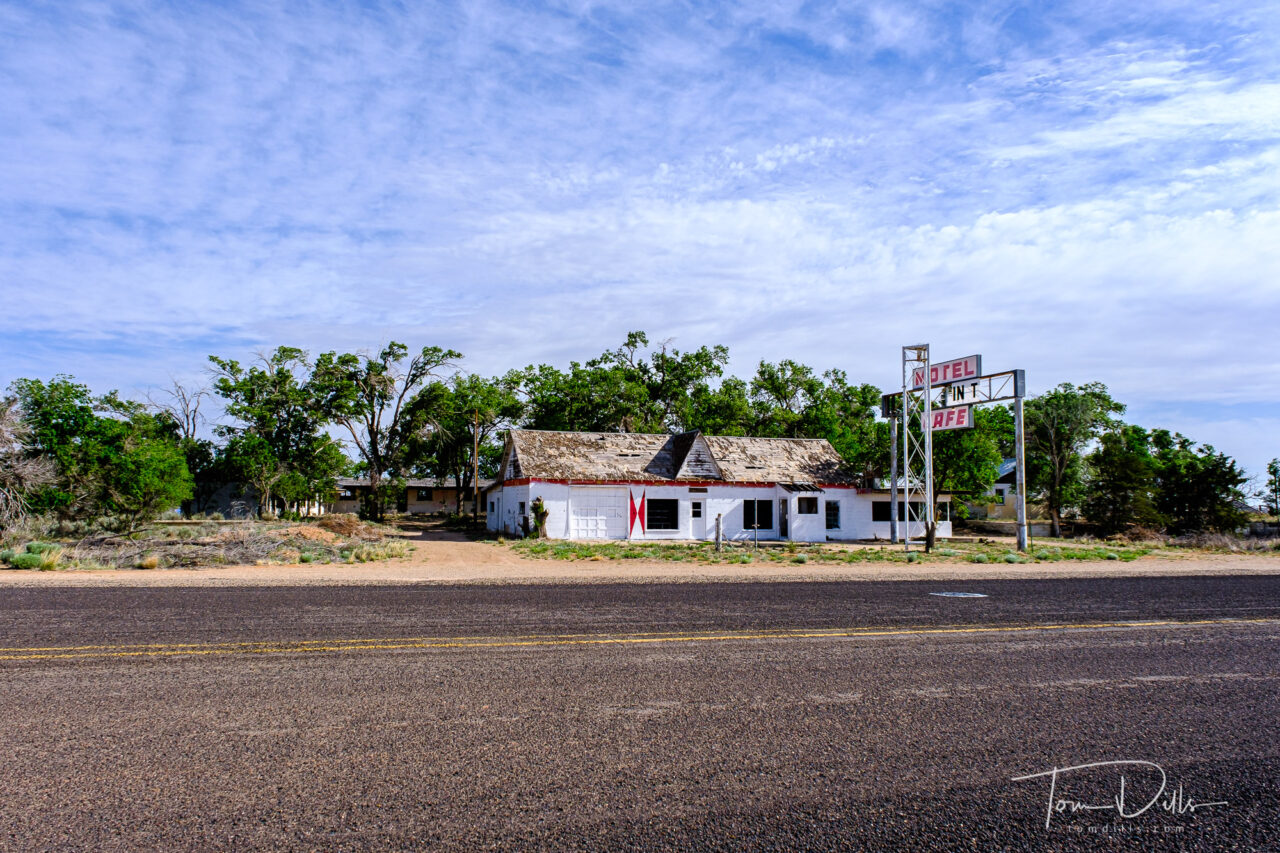
But beauty is in the eye of the beholder, as they say. So don’t take my word for it! There is plenty to see and photograph, just know that there are places where what there is, isn’t what it used to be, and that you may have to drive a long way between those places. And in many parts of the route, especially in Arizona, New Mexico, Texas and Oklahoma, there ain’t a lot more to see! Fortunately, there are National Parks and other landmarks to break up the drive. But as far as Route 66 itself is concerned, get what you can while the gettin’s good.
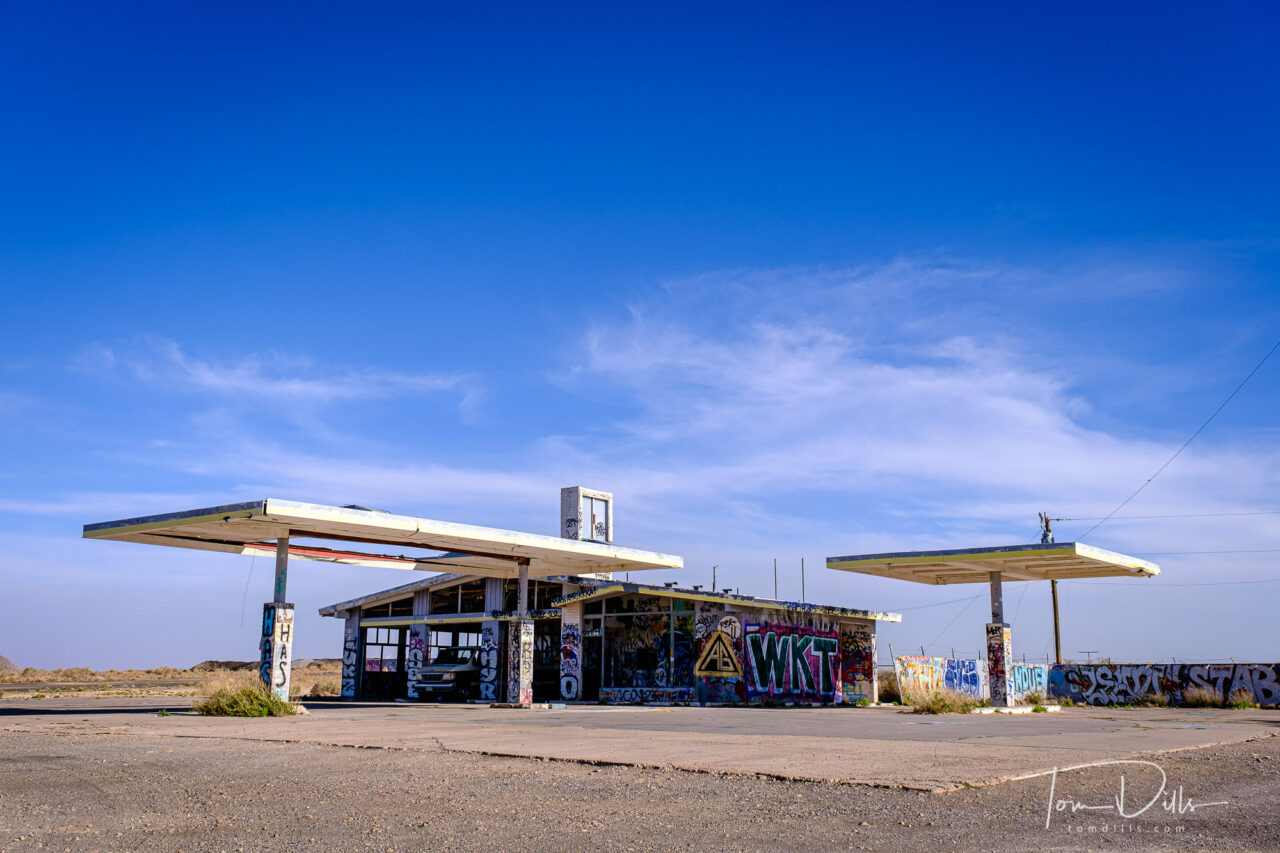
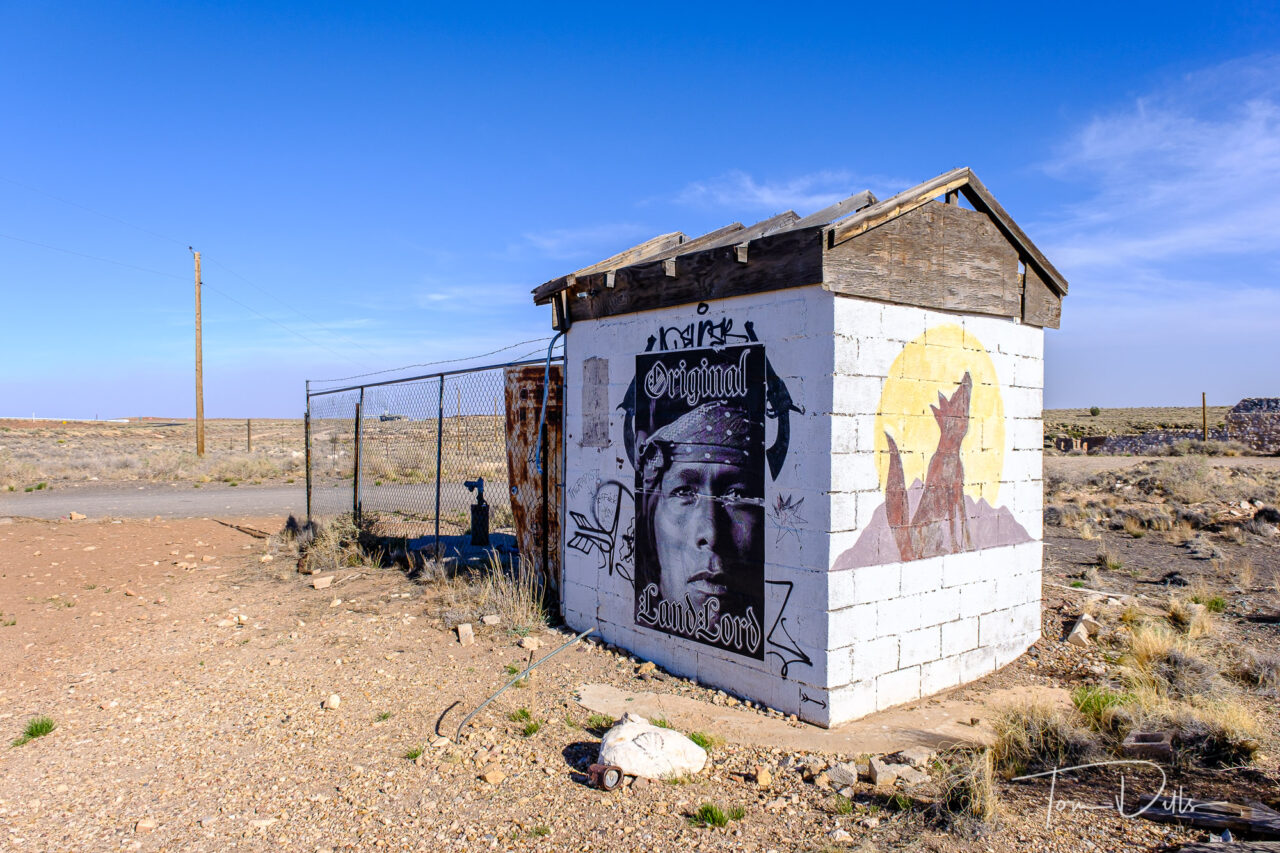
We did it and I’m glad to have had the time and opportunity to check it out for myself. There are a few places I won’t hesitate to go back to, and a lot of places that will be lost to time before I have a chance to return. Everyone will find something there. It all depends on what you are looking for.
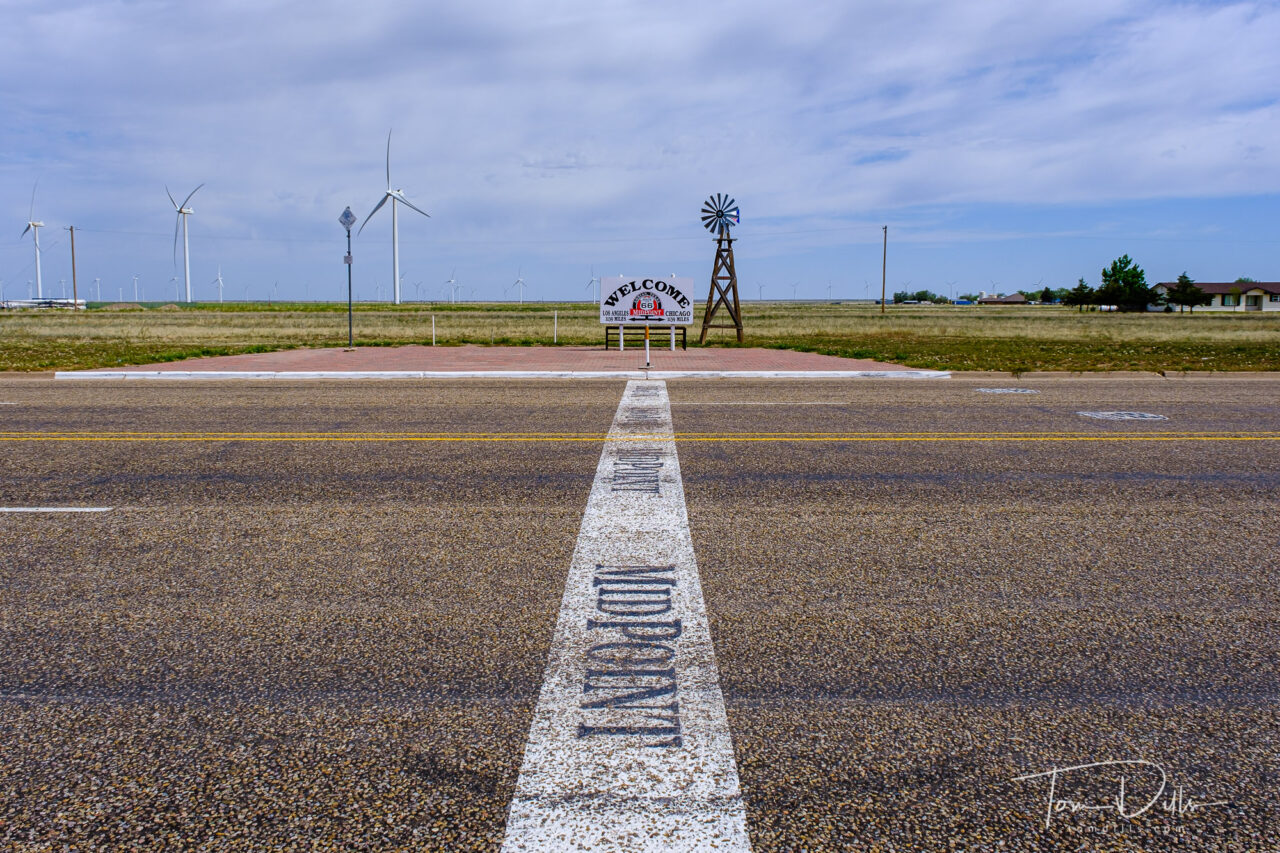

Well said, Tom! I think it reflects my thoughts exactly and I haven’t even driven 66 except for sections here and there. In a way I think it’s much like the natural icons of Delicate Arch, Mesa Arch, and Half Dome; everyone wants to see and photograph them, workshops arrive and depart constantly and the wear and tear shows more and more. They are no longer what they were meant to be, they are what we’ve made them.
You may like this quote from DeLillo’s book “White Noise” I think it fits here also.
https://www.jwsmithphoto.com/blog/2016/6/white-noise
Thanks for the review, always enjoy your thoughts.
The problem with iconic places, at least in my mind, is that at some point the characteristics that made them famous in the first place are lost to the fervor of people wanting to check them off some list. “Bucket List” if you must, but otherwise some list of “must see” destinations. That’s probably the main reason we’ve avoided those places. Yes, I’d love to visit Yosemite, Yellowstone, Arches and others, but I want to be able to enjoy them for what they are. I’d love to see Half Dome or El Capitan but don’t really care if I make a photograph of them. Seeing them and experiencing their majesty would probably be sufficient for me. Although I would at least take a snapshot or two!
The experience is what we need, not the photo. I saw a cartoon of a man and woman at some iconic site. He stands there looking at it while she is trying to get him to look at the phone image she just took. We need more experiences rather than more images. I needed to hear myself say that!
Isn’t that the truth? I’ve been commenting on that more and more – person takes a photo then shows it to someone else so they can see it. We’re experiencing the world through the screen on our phones instead of through our eyes (and hearts).